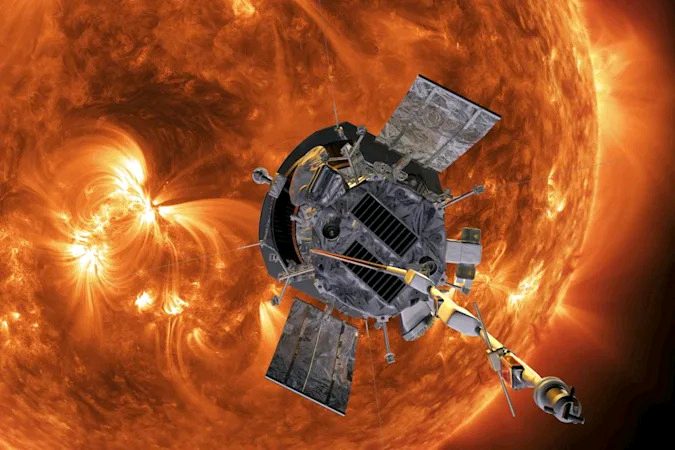NASA announced that the Parker Solar Probe has become the first spacecraft to fly through the Sun’s upper atmosphere, or corona. It passed within 15 solar radii (approximately 6.5 million miles) of the Sun’s surface in April, in a region where magnetic fields dominate solar conditions. “The ‘touching the Sun’ of the Parker Solar Probe is a monumental moment for solar science and a truly remarkable feat,” said NASA associate administrator Thomas Zurbuchen.
The Sun has a superheated atmosphere known as the corona, which is only visible from Earth during a solar eclipse. It is held together by gravity and magnetic fields. Materials can escape those forces and become part of the solar wind at a certain limit known as the Alfvén critical surface, permanently severing their connection to the Sun.

The corona is estimated to be between 10 and 20 solar radii from the Sun’s surface, or approximately 4.3 to 8.6 million miles. At approximately 18.8 solar radii, or approximately 8.1 million miles, the Parker Solar probe detected the specific magnetic and particle conditions required for the corona. It crossed the boundary several times, demonstrating that the Alfvén critical surface has spikes and valleys and is not shaped like a smooth ball.
Inside that region, the probe came across phenomena known as pseudostreamers, which are huge formations visible during solar eclipses that rise above the Sun’s surface. Because of the quieter conditions and slowing particles, NASA described flying through the objects as “flying into the eye of the storm.”
It also made observations that could assist scientists in determining where “switchbacks,” or kinks in the solar wind, form. As it got closer to the sun, it detected bursts of switchbacks, which scientists were able to trace back to the visible surface. They discovered that certain types of “fast” switchbacks form in magnetic funnels formed between convection cells on the sun’s surface.
The probe has not only made the closest-ever approach by the sun, but it is also moving at the fastest speed of any man-made object ever, now around 430,000 MPH. The next close pass will occur in January 2022, during which scientists will attempt to determine how switchbacks and other solar phenomena form. “Such corona measurements will be critical for understanding and forecasting extreme space weather events that can disrupt telecommunications and damage satellites all over the world,” NASA wrote.
READ ALSO: Check Out 10 Fascinating Facts About Iron Man’s Mortal Manifestation Elon Musk
